Cannabis News
US Attorneys Urge Biden to Keep Cannabis as a Schedule 1 Drug Because Drug Cartels Secretly Run State-Legal Home Grows?
Published
1 year agoon
By
admin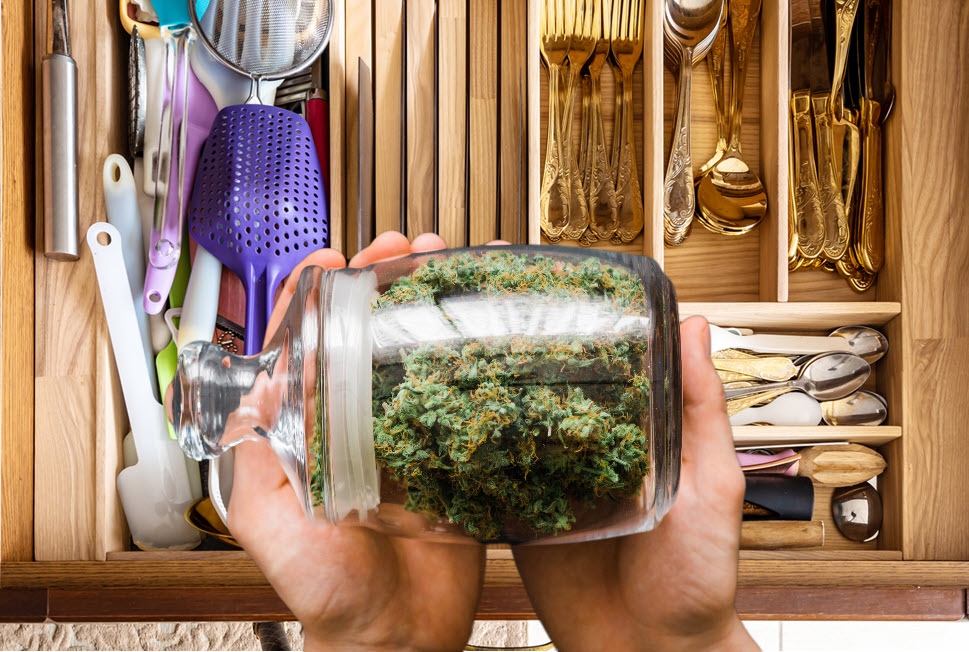
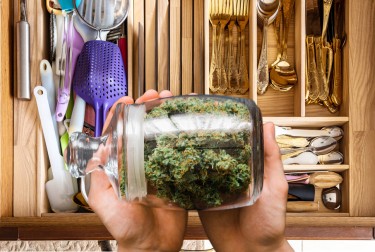
Former U.S. Attorneys Fight Cannabis Rescheduling for the Craziest Sounding Reasons!
In a letter dispatched to the heads of the Department of Justice (DOJ) and the Drug Enforcement Administration (DEA), 29 former U.S. attorneys are fervently urging the Biden administration to retain cannabis in Schedule I of the Controlled Substances Act (CSA). They argue that marijuana has evolved to be more dangerous, potent, and addictive since the last government review in 2016. This development occurs amidst the ongoing DEA examination of marijuana’s scheduling, prompted by the U.S. Department of Health and Human Services (HHS) recommendation in August to shift the substance, reportedly to Schedule III.
Cartel Involvement and Home-Grow Laws
The former U.S. attorneys assert a compelling argument against cannabis rescheduling, contending that the legalization of marijuana has inadvertently favored drug cartels. According to their claim, the implementation of home-grow marijuana laws in various states has provided a fertile ground for cartels to exploit loopholes. Allegedly, these criminal organizations have seized the opportunity to cultivate marijuana within the United States, aiming to reduce the costs associated with cross-border trafficking. However, it is essential to note that this claim lacks a specific source, raising questions about the credibility of the assertion. Moreover, the attorneys’ argument might oversimplify a complex issue, as many states with legalized cannabis have stringent regulations in place, limiting the number of plants for legal home cultivation and explicitly outlawing unlicensed commercial sales.
Despite the lack of citation for their claim, the former federal prosecutors emphasize the role of home-grow laws in what they perceive as a detrimental consequence of marijuana legalization. The argument suggests a connection between state-level cannabis policies and criminal activities, urging policymakers to reconsider the potential unintended consequences of relaxing cannabis regulations. However, critics may argue that this perspective overlooks the broader societal benefits associated with regulated cannabis markets, such as tax revenue generation, job creation, and the displacement of illicit markets. As the debate on cannabis rescheduling unfolds, the nuanced relationship between state-level regulations and criminal activities remains a focal point of contention.
In presenting their case against rescheduling, the former U.S. attorneys highlight the significance of understanding the impact of cannabis policies on law enforcement efforts and criminal behavior. While the connection between legalized cannabis and cartel activities is a serious concern, the complex interplay of factors requires a thorough examination. Policymakers and stakeholders in the ongoing cannabis debate must carefully consider the potential unintended consequences of regulatory decisions, weighing the purported risks against the benefits of a regulated and controlled cannabis industry.
Medical Use and Addiction Concerns
Another key argument put forth by the former U.S. attorneys revolves around the perceived lack of accepted medical use and safety under medical supervision for marijuana. The attorneys challenge the prevailing narrative that marijuana should be considered for rescheduling based on its potential medicinal benefits. Despite the adoption of medical cannabis laws in a significant majority of U.S. states, the former prosecutors point to data from a June 2023 review suggesting that cannabis-based medicines increased adverse events related to the central nervous system. This assertion underscores their position that marijuana lacks a recognized medical application and raises safety concerns.
In the context of the broader debate on cannabis rescheduling, the former U.S. attorneys are urging decision-makers to consider scientific research indicating the high addictive potential of marijuana. By emphasizing the addictive nature of the substance, the attorneys seek to counter arguments advocating for its reclassification. The reference to an addiction rate of 30% among marijuana users and the claim that the addiction rate in Washington state after legalization was 21 percent adds a sense of urgency to their plea. This assertion aligns with their overarching message that marijuana poses significant risks, both in terms of public health and potential societal consequences.
As the attorneys address the issue of medical use, they contribute to a longstanding discourse on the therapeutic benefits and potential drawbacks of cannabis. While acknowledging the existence of medical cannabis laws across various states, the former prosecutors challenge the notion that these laws are grounded in sound scientific evidence. Their argument, rooted in concerns about adverse events and addiction, seeks to maintain the status quo by reinforcing the narrative that marijuana lacks the necessary medical merit for rescheduling. In the complex landscape of cannabis policy, the debate surrounding its medicinal properties continues to shape the trajectory of regulatory decisions.
Financial Implications and Industry Regulation
The former U.S. attorneys delve into the financial implications and regulatory landscape associated with the potential rescheduling of cannabis to Schedule III. Their argument centers on the Internal Revenue Service (IRS) rule 280E, which currently prevents businesses dealing with Schedule I substances from claiming standard business deductions. The attorneys assert that rescheduling cannabis would free marijuana companies from this restriction, enabling them to deduct expenses for various activities, including advertisements targeting youth and the sale of what they describe as child-friendly marijuana products.
This financial perspective introduces a layer of complexity to the debate, as it raises concerns about the commercialization of marijuana and its potential impact on vulnerable populations, specifically youth. The former prosecutors express apprehension that removing the IRS rule 280E barrier could lead to increased marketing efforts appealing to younger demographics. However, critics may argue that existing state regulations already address advertising to minors, and the attorneys’ claim might overlook the measures in place to mitigate such risks.
The contention also highlights the broader issue of industry regulation, emphasizing the potential consequences of altering the financial landscape for cannabis businesses. By linking financial incentives to the perceived risks of youth exposure, the former U.S. attorneys aim to underscore the importance of maintaining stringent regulations. As the cannabis industry continues to evolve, finding a balance between economic considerations and public safety remains a central challenge for policymakers and regulators. The attorneys’ focus on financial implications sheds light on the intricate relationship between taxation policies, industry practices, and the overall societal impact of cannabis rescheduling.
Bottom Line
The letter from 29 former U.S. attorneys provides a staunch defence against the rescheduling of cannabis, emphasizing concerns about increased dangers, cartel involvement, and potential adverse consequences. While their arguments touch on perceived risks associated with legalization, particularly about criminal activities and financial implications, it is essential to critically assess the validity of their claims. The absence of specific sources for certain assertions raises questions about the credibility of the presented arguments. As the cannabis rescheduling debate unfolds, policymakers must carefully weigh the concerns voiced by these former prosecutors against the broader societal and economic considerations associated with regulated cannabis markets. Ultimately, finding a balanced approach that addresses public health concerns, fosters responsible industry practices, and acknowledges the evolving landscape of cannabis legalization is crucial in shaping effective and equitable cannabis policies.
SCHEDULE 3 OR SCHEDULE 1, WHO WINS? READ ON…
You may like
-


Is This the World’s Chicest Cannabis Shop?
-


Maintaining The Highest Level of Quality and Freshness for THCa Products
-


Cannabis Code Enforcement Fines Must be Remedial, Not Punitive, Federal Court of Appeal Holds
-


Are Americans Shifting to Cannabis and Saying Goodbye to Cigarettes for Good?
-


Cannabis Surges as America’s Preferred Buzz: A Cultural Shift Unfolds
-


The Top 10 Best-Selling Flower Strains in California in 2024
Cannabis News
Maintaining The Highest Level of Quality and Freshness for THCa Products
Published
5 hours agoon
January 7, 2025By
admin
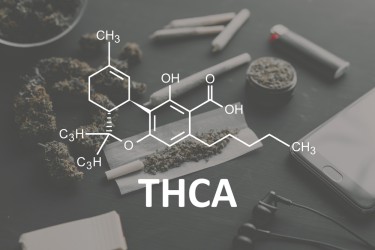
When looking for food, the freshness and quality of the product are essential to the customer. Care must be taken with every product to keep its original qualities. This makes sure that customers have the best experience possible with every buy. Brands ensure their products stay potent and fresh, so to maintain they put them in airtight containers. This gives customers a premium experience that stands out in the market even if they are bought from thca flower clearance. This is especially important when it comes to cannabis goods. Keeping THC-rich flowers fresh ensures every person has a good experience that meets their needs.
The practice of storing things in air-tight containers is very helpful for maintaining their quality. These containers help keep out air, light, and wetness, which can all make the product fresh and effective over time. For people who use cannabis, how fresh the product is can have a big effect on how strong and how long the benefits last. When THC flowers are stored properly, users can expect a better experience that keeps all of the product’s benefits.
The chemicals that give weed its unique tastes and smells, don’t break down when it is stored in an airtight container. Terpenes are very important for improving the taste and making each type unique. The natural qualities of these terpenes can be kept safe by storing them in the right way. This way, every user can enjoy the full range of tastes and smells that the product has to offer.
Why airtight containers are important
Containers that don’t let air in are not only useful, they are necessary for storing things. Over the time, oxygen can break down the product’s cannabinoids and oils. When you use airtight cases, the product stays protected from the outside world. This keeps its chemical structure and makes sure it stays strong.
The users will trust the products only if they feel good about quality. Whether they are used for fun or medical reasons, THC flowers if not stored correctly may have less effect, giving a bad experience for users. To keep the level of quality, it is important to spend money on good storage methods like using airtight containers.
Make sure you have a great time
When a product has been carefully stored in the best possible ways, the experience is more powerful. Whether you are buying flowers to help you feel better or just for fun, they should always be live. With this care, users can get a product that works well like they bought the day it was packaged.
Freshness is at the heart of this process. By making sure that goods are kept in containers that keep air out, businesses can keep up the quality of the goods and make sure that customers can get the best items. Customers are happier and more likely to trust the brand to always provide better goods.
In the end, keeping the product fresh and high-quality isn’t just about keeping it safe, it is also about giving the customer a regular, good experience. Making sure that a product stays fresh and effective from the time it is packed until it gets to the customer is very important. One easy and very effective way to reach this goal is to store things in containers that keep air out. Looking at good storage methods will continue to be important for keeping the quality of THC products even as the cannabis business grows. Customers can be sure that this way of keeping things fresh and effective will make their experience better, whether they are looking for new types or taking advantage of thca flower clearance deals.
Cannabis News
Cannabis Code Enforcement Fines Must be Remedial, Not Punitive, Federal Court of Appeal Holds
Published
6 hours agoon
January 7, 2025By
admin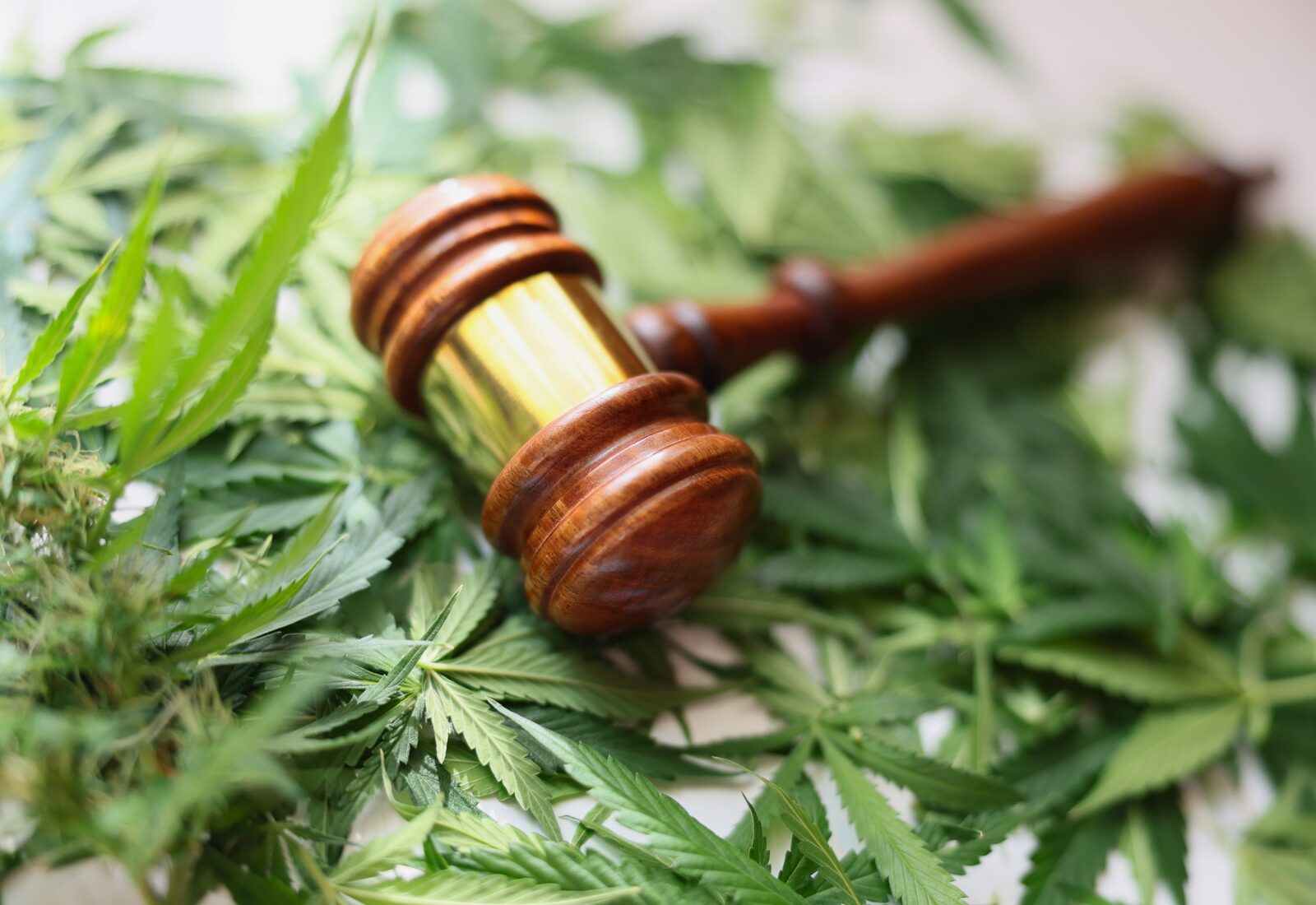
The Ninth Circuit Court of Appeal has reinstated a civil rights lawsuit against Humboldt County, California, that challenges the county’s practices in imposing punitive daily fines. It is the first time a federal appellate court has weighed in on local government’s enforcement of code violations involving cannabis farms.
The Court of Appeal decision
The decision, in Thomas v. County of Humboldt, comes after years of complaints by cannabis cultivators that local governments impose unfair fines for technical violations at licensed farms. That counties and municipalities have adopted and are enforcing large fines involving licensed properties is one of many reasons why increasing numbers of farms have given up their licenses and shut down completely or returned to the illicit market. This is hurting state efforts to bolster the legal market and suppress the illicit market for cannabis.
Lessons for industry and regulators
A takeaway from the decision is that local governments need to keep the goal of remediation in mind in establishing penalties, must be more reasonable in allowing cultivators to fix violations, and more flexible in decisions to impose fines and settling disputes. The decision should motivate county and city attorneys, and cannabis licensees and applicants, seek assistance from a mediator with expertise in the cannabis market and regulation. The courthouse might not now be as friendly a venue for local government as it has been in the past.
Most cannabis businesses that run afoul of local codes pay the penalties, no matter how unfair they might seem, because they can’t afford a long legal battle and the administrative and court processes are tilted against the property owner. Administrative hearing officers routinely uphold notices of violations and the penalties imposed by code enforcement officers. Writs of mandate brought against local government in state court, particularly in smaller counties, are extremely difficult to win.
Background on the Thomas case
What has made the Thomas case viable is that several plaintiffs banded together in a civil rights class action in federal court under 42 U.S.C. § 1983, alleging that Humboldt County’s penalties for cannabis abatement violate the Eighth Amendment’s Excessive Fines Clause.
Humboldt County established a schedule of daily fines for illegal cannabis cultivation of up to $10,000, with a minimum of $6,000. Upon receiving a notice of violation from the county, the party has 10 days to abate all violations, subject to an appeals process, during which penalties continue to accrue. Violations included not just the illegal cultivation of cannabis itself, but also any other violation that facilitates illegal cultivation of cannabis. The Thomas plaintiffs contended that the county issues violation notices with hefty fines based on imprecise data (such as satellite and drone photos) and for code violations that originated with previous property owners.
The lower District Court dismissed the lawsuit on the basis that the plaintiffs lack legal standing, because they had not, at the time of suit, paid any penalties. But the Ninth Circuit held that the plaintiffs had concrete injuries, providing standing, because they suffered emotional distress and had incurred expenses with engineers and attorneys as they attempted to abate the alleged violations and defended themselves in hearings.
Getting to the merits of the lawsuit, the Ninth Circuit held that the plaintiffs had plausible claims under the Excessive Fines Clause because the penalties were punitive, not remedial. The Ninth Circuit agreed with the plaintiffs that the fines were unconstitutionally excessive because (1) the notices were vague, often inaccurate, or involved violations that pre-dated the plaintiffs’ occupation of their properties; (2) lesser penalties could accomplish the same health and safety goals; and (3) the alleged offenses caused no harm beyond a technical lack of compliance with the county’s permitting regulations.
Humboldt provides for an administrative appeal before a hearing officer who determines whether a violation has occurred or continues to exist. The hearing officer can only reduce the penalty for a violation in limited circumstances and cannot reduce it to less than $6,000 per day. Although the Ninth Circuit did not explicitly address it in the Thomas decision, a property owner in most circumstances also can be forced to pay the county or municipality’s abatement costs and legal expenses — including those incurred in a subsequent writ of mandate proceeding in state court. The Ninth Circuit agreed that the Thomas plaintiffs had come under:
“immense pressure to settle due to the County’s issuance of ruinous fines, . . . its undue delay in providing hearings, its denial of permits while abatements are pending, and the cost the County imposes to prove one’s innocence.”
The Ninth Circuit found that Humboldt County’s fines were “clearly punitive, not remedial as argued by the County.” The fines could reach millions of dollars, and, in the case of one plaintiff, the fines dwarfed the value of her property. The appellate court was untroubled by the involvement of cannabis, which remains unlawful under the federal Controlled Substances Act:
“[I]t seems clear to us that lesser penalties could accomplish the same health and safety goals,” and “the offenses here have caused no harm beyond a technical lack of compliance with the County’s cannabis permitting regulations.”
The Thomas plaintiffs’ strategy pays off
The Thomas plaintiffs’ strategy of going to federal court was fraught, because the court could have just as easily declined to hear the matter under the illegality doctrine, but it paid off here; the Ninth Circuit not only considered the case but also disregarded the problem of whether the plaintiffs were entitled to any remedy under federal law.
The Ninth Circuit concluded by acknowledging that local government is “often at the forefront of addressing difficult and complex issues,” but it should use “flexibility” in decision making and “cannot overstep its authority and impose fines on its citizens without paying heed to the limits posed by the Eighth Amendment.”
Note: This post was first published January 6, 2025 on the Alger ADR Blog
Cannabis News
Are Americans Shifting to Cannabis and Saying Goodbye to Cigarettes for Good?
Published
7 hours agoon
January 7, 2025By
admin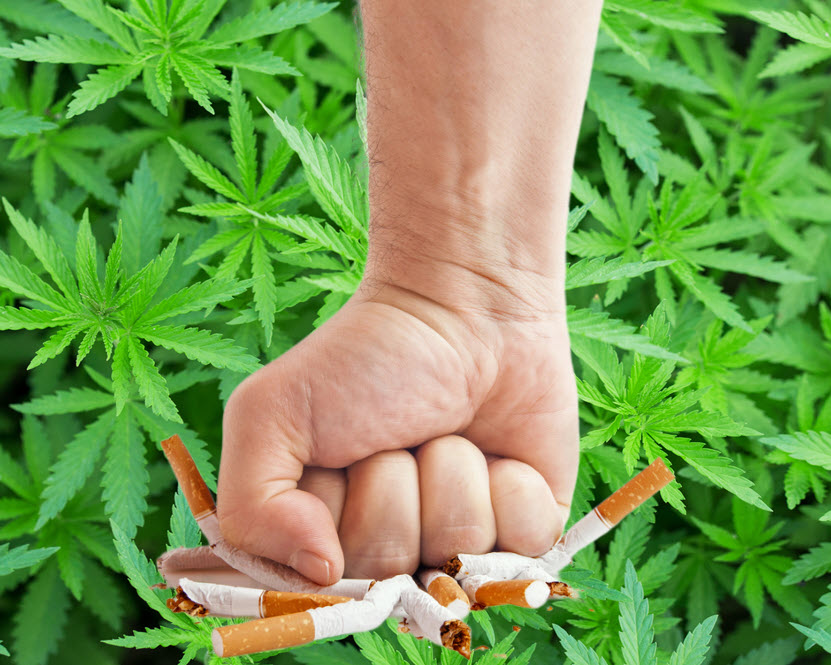

Are Americans Shifting To Weed And Saying Goodbye To Cigarettes?
We live in a time when people are more health-conscious than ever.
For the first time in history, we’re seeing a downward trend in the consumption of cigarettes, especially among young adults and adolescents. Just a few decades ago, cigarettes were considered ‘cool’. The link between cancer and cigarettes were established by the 1950’s, though accepting that cigarette smoking was “bad” for you didn’t take root socially until around the late 1990’s.
Now, we know that cigarette smoking is a dangerous, often fatal habit that leads to cancer, respiratory illnesses, and heart disease. According to the World Health Organization (WHO), over 8 million people die prematurely from tobacco use yearly.
In the results of a Gallup poll from early 2024, they found that more Americans are more likely to smoke weed than cigarettes, while young people are more than 5 times more likely to choose weed over tobacco. The poll found that 17% of Americans smoke weed, while 12% admitted to smoking cigarettes in the previous week. The more dramatic difference was observed among the 18-34 age range, where 26% admitted to consuming weed while only 5% of them still smoke cigarettes.
For the same poll, they also found that the older adults aged 55 and up were more likely to still smoke cigarettes compared to marijuana. “Americans’ reported marijuana smoking has more than doubled since 2013, when Gallup first added the question in its annual Consumption Habits survey,” explained Gallup. “That year, seven percent said they did,” they reported.
Improved Public Perceptions Leads To Healthier Choices
One can’t deny that there has been a massive shift in the increasing awareness of marijuana’s health benefits, as well as the dangers of cigarette smoking. This leads to changing public perceptions, better and more scientific research as well as clinical studies, and an improvement in the law.
The law, specifically, has been instrumental in mitigating the spread of cigarette use. For example, many governments worldwide have established strict no-smoking policies and placed a massive tax on cigarettes. Tobacco manufacturers are no longer allowed to freely advertise their product. All these have led to a downward trend in cigarette smoking habits and purchasing.
The proliferation of legal cannabis throughout North America, not just for medical use but also for recreational use has also contributed to a widespread cultural acceptance of cannabis, which has also improved the public perception of the drug. As we speak, it’s already become a part of society not just in North America but also in countries such as Thailand, several European nations, Uruguay, and Mexico to name a few.
In addition, people are also becoming more educated about the use of alcohol. While it may still be the most widely used intoxicant, its days me be numbered: there is a small yet growing number of people who are choosing to replace alcohol with weed, because of the sheer number of studies proving the dangerous link between fatal illnesses and alcohol. Not to mention that alcohol is linked to drunk driving and road fatalities, multiple different types of cancers, horrible hangovers, and so much more.
Even Gallup polls from as far back as 2022 revealed that people in the United States have already begun to smoke more weed than cigarettes. Gallup conducted the survey from July 5 through 26 of 2022. The results reveal that 11% of the population smoke cigarettes, while back in the mid-1950’s, 45% of Americans smoked them. Meanwhile, 16% of Americans reported that they smoke weed, and 48% tried it in the past. Back in 1969, just 4% of Americans smoked weed!
It’s clear that societal and cultural perceptions around both have changed dramatically. “Smoking cigarettes is on the decline and is most likely to become even more of a rarity in the years ahead,” explains Gallup Senior Scientist Dr. Frank Newport. “This reflects both public awareness of its negative effects and continuing government efforts at all levels to curtail its use,” he said.
Unfortunately, the Gallup poll also found that alcohol remains a popular substance for Americans. Despite the increasing studies being published right now that alcohol is a proven carcinogen, one can’t blame the population: it’s legal, easily accessible, and affordable for many.
Overall, it seems that the demand for wellness is slowly taking over. Wellness is no longer just a buzzword or a trend; it’s a real pursuit that more, especially young people, are seeking. And cannabis fits very well into that picture: whether CBD or THC, the components of marijuana have proven beneficial for the mental and physical health of people, across a wide age group. From pediatric CBD applications to therapeutic uses for the elderly, cannabis can be beneficial for many people.
It’s so easy to see why thousands of young adults commonly include cannabis as part of their everyday wellness regimen – the same generation that have shunned cigarette smoking for good.
Conclusion
If you really must have a smoking habit, choose weed over cigarettes. Even then, any type of weed is much healthier than tobacco. Marijuana is so much healthier for your mind and body, and it can function as a medicine and supplement as well.
For individuals who are struggling to quit smoking cigarettes, you might even want to consider using cannabis as a cessation aid. Many have found success using cannabis to quit cigarettes, with longer-lasting success rates.
CAN CANNABIS HELP YOU QUIT CIGARETTES? READ BELOW…

Is This the World’s Chicest Cannabis Shop?

Maintaining The Highest Level of Quality and Freshness for THCa Products

Cannabis Code Enforcement Fines Must be Remedial, Not Punitive, Federal Court of Appeal Holds

Are Americans Shifting to Cannabis and Saying Goodbye to Cigarettes for Good?

Cannabis Surges as America’s Preferred Buzz: A Cultural Shift Unfolds

The Top 10 Best-Selling Flower Strains in California in 2024

Cannabis cafes in California are allowed to sell fresh food, non-alcoholic beverages in 2025

Golden Globe Winner Hacks Treats Marijuana Like Normal

Justin Trudeau’s Long Involvement With Cannabis

Sherry Is Becoming A Thing Again

Distressed Cannabis Business Takeaways – Canna Law Blog™

United States: Alex Malyshev And Melinda Fellner Discuss The Intersection Of Tax And Cannabis In New Video Series – Part VI: Licensing (Video)

What you Need to Know

Drug Testing for Marijuana – The Joint Blog

NCIA Write About Their Equity Scholarship Program

It has been a wild news week – here’s how CBD and weed can help you relax

Cannabis, alcohol firm SNDL loses CA$372.4 million in 2022

A new April 20 cannabis contest includes a $40,000 purse

Your Go-To Source for Cannabis Logos and Designs

UArizona launches online cannabis compliance online course
Trending
-

 Cannabis News2 years ago
Cannabis News2 years agoDistressed Cannabis Business Takeaways – Canna Law Blog™
-

 One-Hit Wonders2 years ago
One-Hit Wonders2 years agoUnited States: Alex Malyshev And Melinda Fellner Discuss The Intersection Of Tax And Cannabis In New Video Series – Part VI: Licensing (Video)
-

 Cannabis 1012 years ago
Cannabis 1012 years agoWhat you Need to Know
-

 drug testing1 year ago
drug testing1 year agoDrug Testing for Marijuana – The Joint Blog
-

 Education2 years ago
Education2 years agoNCIA Write About Their Equity Scholarship Program
-

 Cannabis2 years ago
Cannabis2 years agoIt has been a wild news week – here’s how CBD and weed can help you relax
-

 Marijuana Business Daily2 years ago
Marijuana Business Daily2 years agoCannabis, alcohol firm SNDL loses CA$372.4 million in 2022
-

 California2 years ago
California2 years agoA new April 20 cannabis contest includes a $40,000 purse





